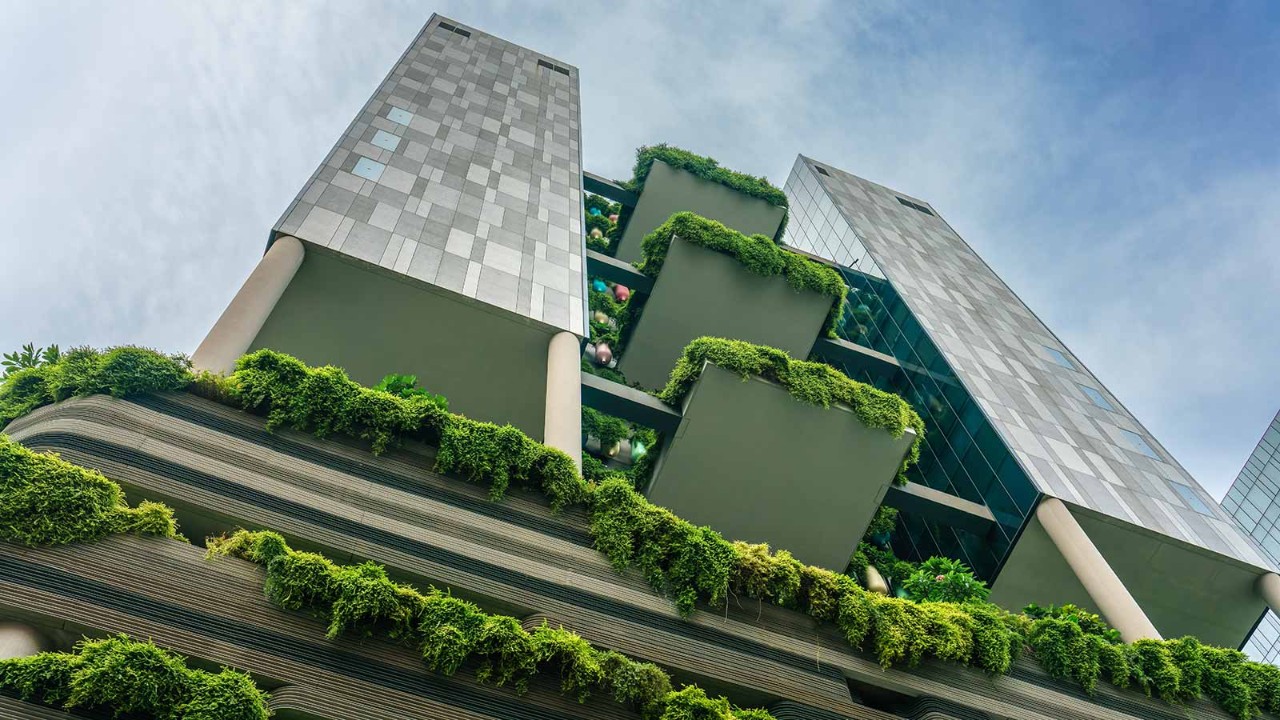
Singapore has always been green. Located in the heart of an equatorial jungle, it has abundant trees and flora. And its residents, it seems, are also becoming greener, with strong feelings on climate change and sustainability. With the Cop27 summit taking place in November, climate change continues to be a hot topic in Singapore’s homes and workplaces.
More than three-quarters (77%) of Singaporeans now prefer to live in green buildings, according to a new survey by Schneider Electric. This is a sharp increase from 2021 when just 47% gave that as their preference. And when it comes to employment, 81% prefer to work in a green building.
The survey clearly highlights how Singaporeans are increasingly green-minded, and changing behaviour accordingly. An overwhelming 90% now consider themselves to be environmentally conscious. However, significant differences exist between age groups, with 45% of Gen Z saying they are extremely environmentally conscious, compared with just 18% of baby boomers.
Such disparity across the age groups probably comes as no surprise, given how climate change is a relatively new issue that has only gradually become part of our everyday language. A few years ago, few people would have heard of Cop, the UN’s climate change conference. Now it is one of the most high-profile events on the global calendar.

The city-state is a shining example of sustainable urban planning done well
Smart from the start
Singapore had a contingent at the event in Egypt, which continued the dialogue on reducing greenhouse gas emissions. The city-state is a shining example of sustainable urban planning done well, maintaining its rainforests and greenery alongside vast skyscrapers, social housing and shopping malls. It has also championed public transport over car ownership. In many ways, Singapore was a smart city before the phrase became popular.
The survey findings are part of Schneider Electric’s Singapore Green Pulse survey, which tracks sentiments and attitudes towards sustainability and Singapore’s Green Plan 2030. The financial hub is known for its long-term planning and ability to get things done, so its push to become more sustainable should be a walk in the park, based on its impressive track record.
Singapore has committed to reach net-zero greenhouse gas emissions by 2050, and, like its Asian neighbours, has a strong incentive to achieve this. Global warming is having a greater effect on the region than other parts of the world. According to the IMF, temperatures are rising twice as fast in Asia Pacific as the global average, causing increased frequency and severity of weather-related natural disasters.
Yet that’s not the whole story. While Asia is suffering from the effects of climate change, it is also a key source of the problem. The region produces about half the world’s carbon dioxide emissions and some of the largest greenhouse-gas-emitting countries are located here.
Many nations look to Singapore as the poster child for developed Asia
Prosperity plus sustainability
As a tiny territory in Southeast Asia, Singapore can only do so much. Yet many nations look to Singapore as the poster child for developed Asia given its amazing transformation over the past 50 years into a wealthy and prosperous city-state. And its journey hasn’t ended there. As it grows its population, Singapore has not let sustainability and the protection of its environment drop into the background.
At the heart of the city-state's Green Plan 2030 is a coastal and flood protection fund, set up with an initial S$5bn. One-fifth of this fund has been committed to researching urban solutions and sustainability, including renewable energy and cooling. There are various options available, from using mangroves for coastline protection to flood-proofing metro stations.
It’s worth remembering that part of Singapore’s transformation into a glittering city-state involved reclaiming a large chunk of land from the sea – it now houses part of the central business district. But this reclaimed land is less than five metres above mean sea level, presenting a higher flood risk should sea levels rise.
A few years ago, Singapore’s then prime minister Lee Hsien predicted that S$100bn or more could be needed over the next 50 to 100 years to protect the city-state against rising seas. Now that’s forward planning, and prudent too.



